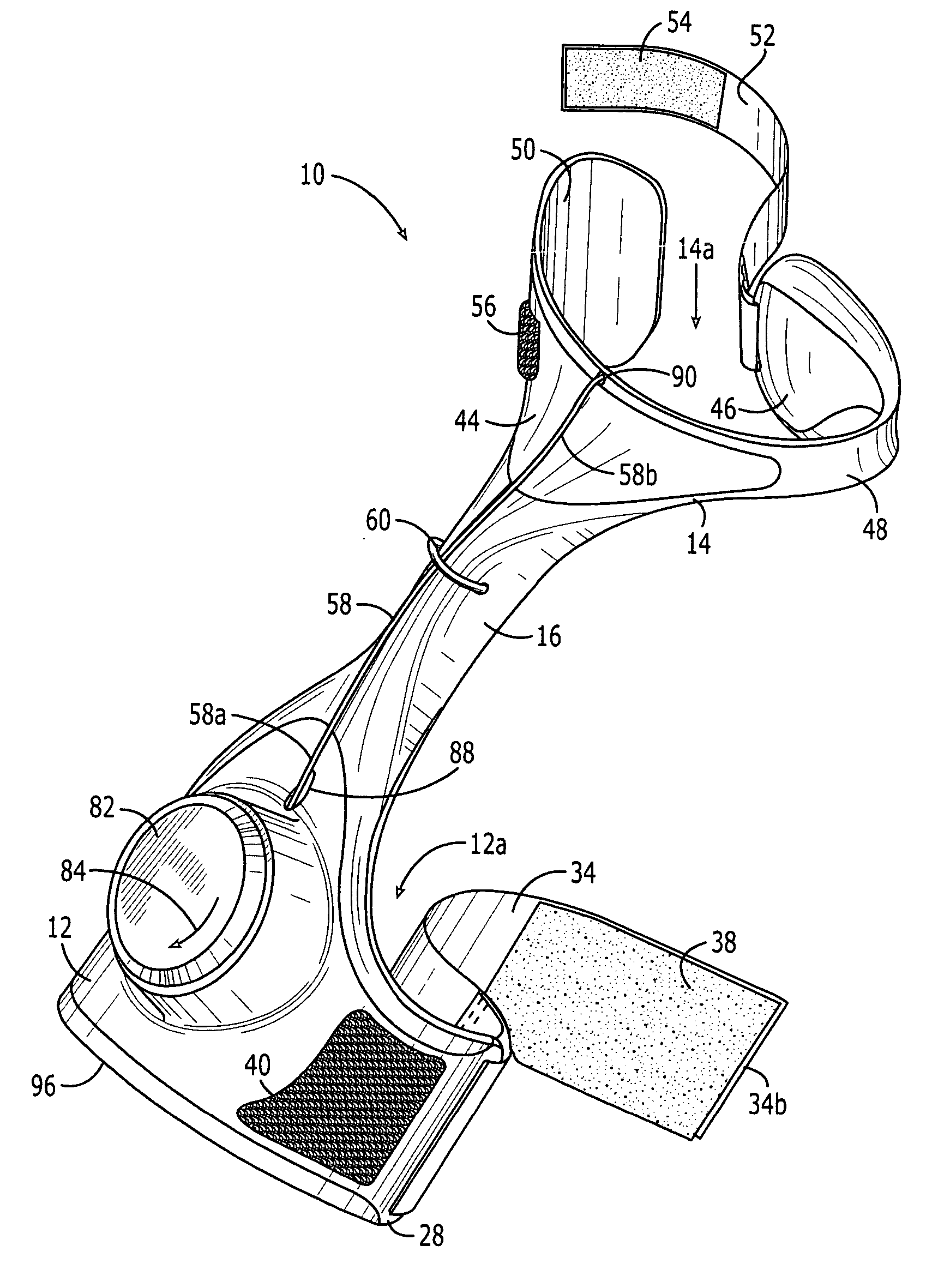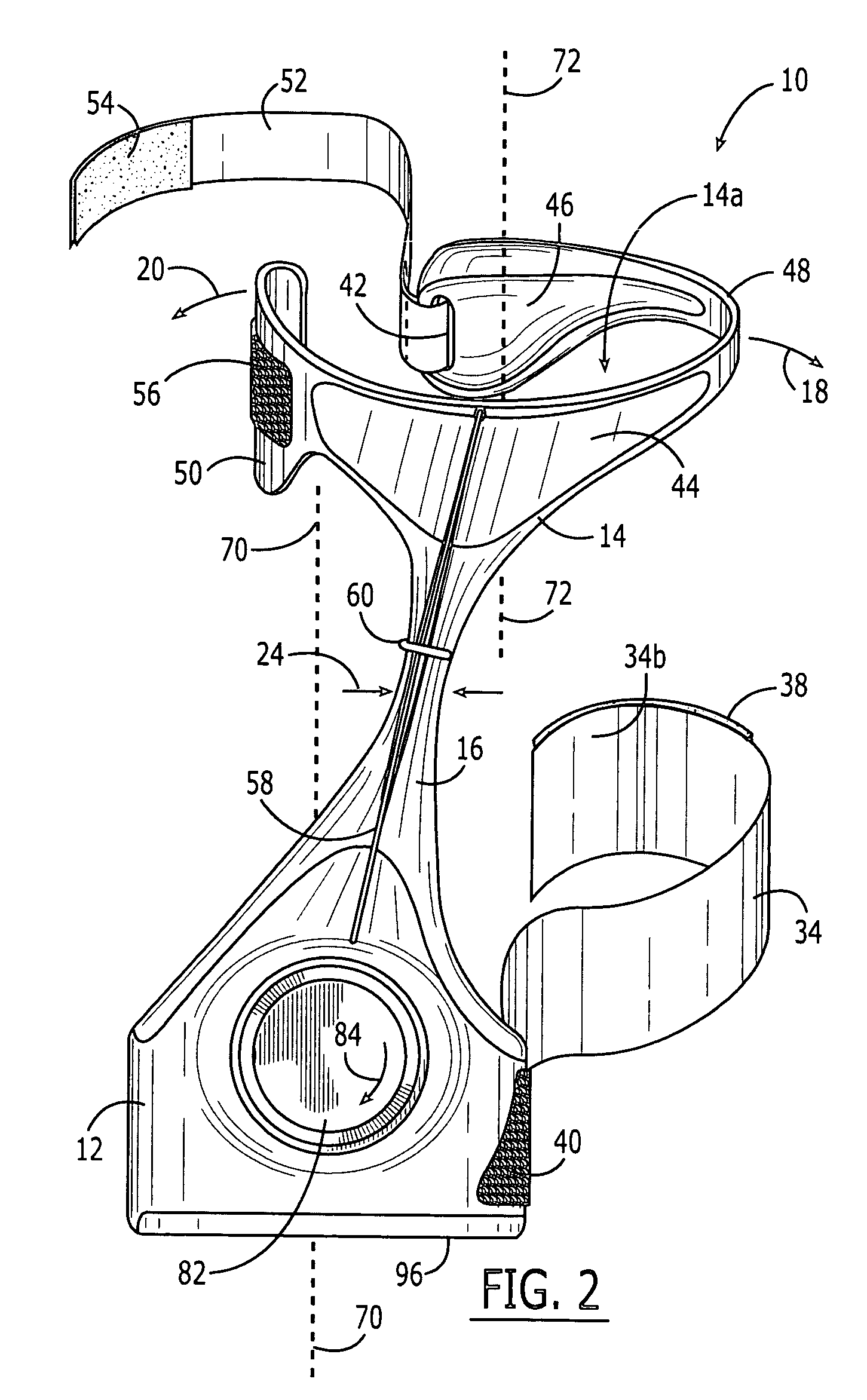Wrist support
a joint support and wrist technology, applied in the field of joint support, can solve the problems of hard-shell or rigid beam components, inconvenient adjustment,
- Summary
- Abstract
- Description
- Claims
- Application Information
AI Technical Summary
Benefits of technology
Problems solved by technology
Method used
Image
Examples
first embodiment
[0027] Turning now the figures, the invention is shown in FIGS. 1-4, wherein a wrist support 10 comprises a first section 12 for receiving a forearm, a second section 14 for receiving a hand, and a bridging section 16 extending between and connecting together the first section 12 and the second section 14. The bridging section 16 permits flexing of the second section 14 relative to the first section 12, particularly in a radial-ulnar plane. That is, the bridging section 16 permits flexing of the second section 14 in a radial direction 18 (FIG. 2) and in an ulnar direction 20 relative to the first section 12.
[0028] The bridging section 16 preferably comprises an elastomeric material that is generally flexible and recoverable. The bridging section 16 generally maintains or biases the second section 14 to obtain a particular disposition, for example that of FIGS. 2-3, relative to the first section 12. However, when forces in radial and ulnar directions 18,20 are present, such as when t...
second embodiment
[0060] Turning now to a second embodiment shown in various views in FIGS. 5-8, a wrist support 110 comprises a first section 112 for receiving a forearm, a second section 114 for receiving a hand, and a bridging section 116 extending between and connecting together the first section and second section. The bridging section 116 permits flexing of the second section 114 relative to the first section 112, particularly in a radial-ulnar plane. That is, the bridging section 116 permits flexing of the second section 114 in a radial direction 118 (FIG. 6) and in an ulnar direction 120 relative to the first section 112.
[0061] The bridging section 116 preferably comprises an elastomeric material that is generally flexible and recoverable. The bridging section 116 generally maintains or biases the second section 114 to obtain a particular disposition, for example that of FIGS. 6-7, relative to the first section 112. However, when forces in radial and ulnar directions 118,120 are present, such...
PUM
 Login to View More
Login to View More Abstract
Description
Claims
Application Information
 Login to View More
Login to View More - R&D
- Intellectual Property
- Life Sciences
- Materials
- Tech Scout
- Unparalleled Data Quality
- Higher Quality Content
- 60% Fewer Hallucinations
Browse by: Latest US Patents, China's latest patents, Technical Efficacy Thesaurus, Application Domain, Technology Topic, Popular Technical Reports.
© 2025 PatSnap. All rights reserved.Legal|Privacy policy|Modern Slavery Act Transparency Statement|Sitemap|About US| Contact US: help@patsnap.com



